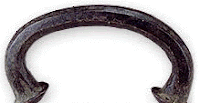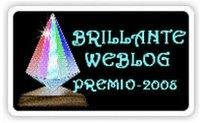2000 BC – This is a weight from Mesopotamia which was used to weigh silver in 2000 BC.

600 BC – China makes coins shaped like cowrie shells and hand tools. These were some of the first coins ever made by a country!
300 BC – In this time period, the first Indian coins were made. They were modeled after the Greek's coins. From the 13th century AD, the Indian coins were based on coins made by the region of Islam, until during the colonial period when they looked like European coins. The coins made in the 4th century BC were silver with punched out holes. Later, they were square with an elephant.
620 – The first coin made in Japan is called the “Kai Yuan Tong Bao". It was minted, or made, by the Tang Dynasty. This is very important. It introduced real money to Japan. This was the first real money that Japan had. Below is a picture of the Kai Yuan Tong Bao coin.

1500-1700 – The Koreans copy China’s currency from the way it looks to how it is made. Japan, Vietnam, and China’s currencies are spread across Asia.
1600-1601 – Tokugawa created The Monetary System. He also started Kinza and Ginza mints. Kinza means gold and Ginza means silver.
1870-1893 – More silver was discovered in the world. This meant that the money in countries such as China, Japan, and South East Asia, was no longer worth as much as it used to be worth.
1882 – The Bank of Japan is founded. It is the first national bank created in Japan. The National Bank of Japan is the central bank of Japan. The top priorities of the Bank of Japan are issuing bank notes, carrying out currency and monetary control, maintaining an orderly financial system, maintaining price stability, and contributing to the productive development of the national economy.
1891 – Japanese savings banks increase by 20 times. By 1901 the number of savings banks are up to 441. That’s 421 more banks than there were ten years ago!
1897 – While adopting the gold standard, Japan created more gold reserves which enabled them to make the change from silver to gold.
Present – Today in Japan they use yen and credit cards. The Japanese are advanced in technology and do many things that we do here in America. Many countries use credit cards. They are a form of modern day currency.
10,000 yen issued on November 1, 2004
1,000 yen issued November 1, 2004
5,000 yen issued November 1, 2004
Future – Credit cards and digital money are the currency of the future. We will completely wipe out things like identity theft because of new advanced security. We will have locks that only open to the sound of your voice or your specific finger print. Every person will have devices that will allow them to do all of their shopping from home. Nobody will use coins or paper money. They'll just take out their credit card and charge whatever they buy. Checks will still be used but not as often.









